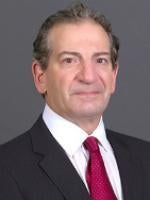After meeting behind closed doors a few weeks ago, the Federal Reserve announced its latest monetary policy. Not surprisingly, Fed Chair Janet Yellen’s remarks included a statement on the future (or lack thereof) of the central bank’s quantitative easing (“QE”) stimulus program. While the end of the QE program has been in sight for some time, the Fed’s decision to increase rates (likely sometime in early 2015) before terminating the program indicates that the economy isn’t exactly where the Fed would like it to be.
QE is one of the cornerstones of the stimulus program the Fed put into effect during the last recession. It involves the Fed purchasing U.S. Treasury notes and mortgage-backed securities (“MBS”) from commercial banks, thus raising the prices of those securities and lowering their yield, while simultaneously increasing the monetary base. The purpose of the program, which falls within the scope of an expansionary monetary policy, is to lower interest rates and spur economic growth.
QE resulted in a massive expansion of the Fed’s normal open market operations. Prior to the recession, the Fed held between $700 and $800 billion of Treasury Notes on its balance sheet. However, as a result of QE, the Fed’s balance sheet has more than quadrupled to approximately $4.5 trillion.
The Fed began winding down the QE program in monthly increments of $10 billion at the end of last year. The decision to wind down the program indicated the Fed’s belief that the economy was on the road to recovery. Indeed, at the conclusion of the Fed’s June 2014 meeting, Yellen indicated that if economic recovery continued as expected, the Fed would have one final $15 billion purchase in October and no additional purchases in November.
The Fed now has changed course slightly. In her remarks at the conclusion of the FOMC meeting, Yellen indicated that the Fed intends to make another $10 billion cut in its pace of Treasury note and MBS purchases. However, the central bank has committed to increasing its key short-term rate before it terminates the QE program altogether. In other words, while we’re seeing the return of a robust U.S. economy, we aren’t quite there yet. We can expect MBS purchases to continue for at least a few more months, giving commercial banks the opportunity to further cleanse their balance sheets and hopefully start making more credit available to the general public.



 />i
/>i

